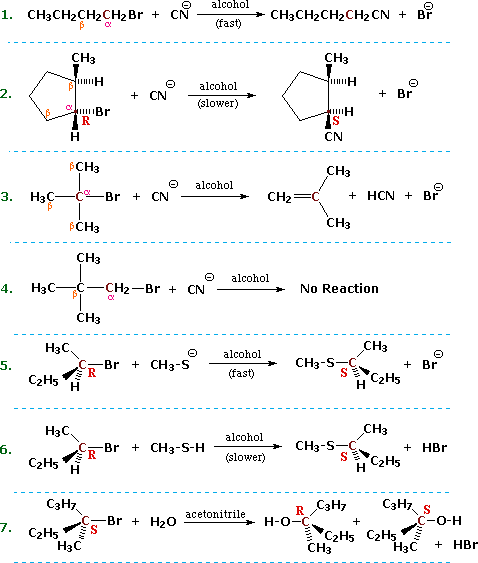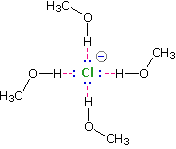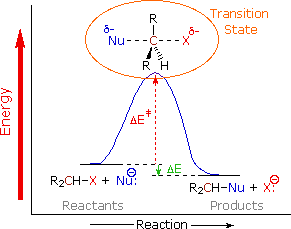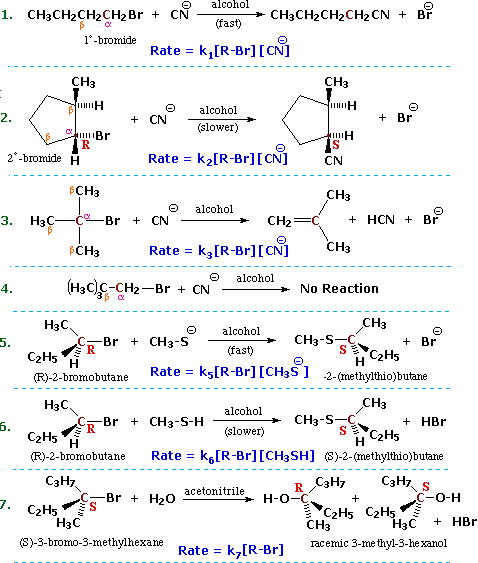Organic Chemistry Text Book (CHEM 3401 and 3402)
- Home
-
Chapter 1: A Review of General Chemistry
Toggle Dropdown
- 1.1 Introduction to Organic Chemistry
- 1.2 Electrons, Bonds, and Lewis Structures
- 1.3 Identifying Formal Charges
- 1.4 Atomic Orbitals
- 1.5 Valence Bond Theory
- 1.6 Molecular Orbital Theory/Hybridization
- 1.7 VSEPR Theory: Predicting Geometry
- 1.8 Dipole Moments and Molecular Polarity
- 1.9 Intermolecular Forces and Physical Properties
- Problem Set
- Videos for chapter 1
- Chapter 2: Molecular Representations Toggle Dropdown
- Chapter 3: Acids and Bases Toggle Dropdown
- Chapter 4: Alkanes and Cycloalkanes Toggle Dropdown
- Chapter 5: Stereochemistry Toggle Dropdown
- Chapter 6: Chemical Reactivity and Mechanisms Toggle Dropdown
- Chapter 7: Substitution Reactions
-
Chapter 8: Addition Reactions of Alkenes
Toggle Dropdown
- 8.1 Introduction of Addition Reactions
- 8.1 Nomenclature of Alkenes
- 8.2 Hydrohalogenation of Alkenes
- 8.3 Hydration, Hydroboration, and Oxymercuration of Alkenes
- 8.4 Hydrogenation of Alkenes
- 8.5 Halogenation of Alkenes
- 8.6 Dihydroxylation, Epoxidation, and Ozonolysis of Alkenes
- Problem Set
- Chapter 8 Videos
- Chapter 9: Alkynes Toggle Dropdown
- Chapter 10: Radicals Toggle Dropdown
- Chapter 11: Synthesis Toggle Dropdown
- Problem Sets Organic Chemistry I (CHEM 3401)
-
Chapter 12: Alcohols and Phenols
Toggle Dropdown
- 12.1 Alcohol Structure
- 12.2 Solubility
- 12.3 Boiling Point & Melting Point
- 12.4 Nomenclature
- 12.5 Alcohol Acidity
- 12.6 Reactions of Alcohols and Phenols
- 12.6.1 Substitution of the Hydroxyl Hydrogen
- 12.6.2 Nucleophilic Substitution of the Hydroxyl Group
- 12.6.3 Elimination Reactions of Alcohols
- 12.6.4 Oxidation Reactions of Alcohols
- 12.6.5 Reactions of Phenols
- 12.7 Practice Problems
- 12.7.1 Alcohol Nomenclature 1
- 12.7.2 Alcohol Nomenclature 2
- 12.7.3 Alcohol Nomenclature 3
- 12.7.4 Formation of Carbonyl Compounds
- 12.7.5 Functional Relationships of Alcohols
- 12.7.6 Reactions of Alcohols & Phenols
- 12.7.7 Alcohol Reactions
- Chapter 13: Ethers and Epoxides Toggle Dropdown
-
Chapter 14: Infrared Spectroscopy and Mass Spectrometry
Toggle Dropdown
- 14.1 Introduction fo Molecular Spectroscopy
- 14.2 Infrared Spectroscopy
- 14.2.1 Introduction
- 14.2.2 Vibrational Spectroscopy
- 14.2.3 Group Frequencies
- 14.2.4 Table of Characteristic IR Frequencies
- 14.3 Mass Spectrometry
- 14.3.1 The Mass Spectrometer
- 14.3.2 Characteristics of Mass Spectra
- 14.3.3 Isotopes
- 14.3.4 Fragmentation Patterns
- 14.3.5 High Resolution Spectra
- 14.3.6 MS Practice Problems
- 14.3.6a Problem 1
- 14.3.6b Problem 2
- 14.3.6c Problem 3
- 14.3.6d Problem 4
- 14.3.6e Problem 5
- 14.3.6f Problem 6
- 14.3.6g Problem 7
- 14.3.6h Problem 8
-
Chapter 15: Nuclear Magnetic Resonance Spectroscopy and UV-Visible Spectroscopy
Toggle Dropdown
- 15.1 Nuclear Magnetic Resonance Spectroscopy
- 15.1.1 Background
- 15.1.2 Proton NMR Spectroscopy
- 15.1.2a Introduction to Proton NMR Spectroscopy
- 15.1.2b Chemical Shift
- 15.1.2c Signal Strength
- 15.1.2d Hydroxyl Proton Exchange and the Influence of Hydrogen Bonding
- 15.1.2e Pi-Electron Functions
- 15.1.2f Solvent Effects
- 15.1.2g Spin-Spin Interactions
- 15.1.2h Examples
- 15.1.3 Carbon NMR Spectroscopy
- 15.1.4 NMR Practice Problems
- 15.1.4a Problem 1
- 15.1.4b Problem 2
- 15.1.4c Problem 3
- 15.1.4d Problem 4
- 15.1.4e Problem 5
- 15.1.4f Problem 6
- 15.1.4g Problem 7
- 15.1.4h Problem 8
- 15.1.4i Problem 9
- 15.1.4j Problem 10
- 15.1.5 Table of Proton NMR Shifts
- 15.1.6 Table of Carbon NMR Shifts
- 15.2 UV-Visible Spectroscopy
- 15.2.1 Background
- 15.2.2 The Electromagnetic Spectrum
- 15.2.3 UV-Visible Absorption Spectra
- 15.2.4 The Importance of Conjugation
- 15.3 Spectroscopy Practice Problems
- Chapter 16: Conjugated Pi Systems and Pericyclic Reactions Toggle Dropdown
-
Chapter 17: Aromatic Compounds
Toggle Dropdown
- 17.1 Aromaticity
- 17.1.1 Benzene
- 17.1.2 Fused Ring Compounds
- 17.1.3 Other Aromatic Compounds
- 17.1.4 Antiaromaticity
- 17.1.5 Practice Problems
- 17.1.5a Problem 1
- 17.1.5b Problem 2
- 17.2 Reactions of Substituent Groups
- 17.2.1 Oxidation of Alkyl Side-Chains
- 17.2.2 Bromination of Alkyl Side-Chains
- 17.2.3 Reduction of Nitro Groups
- Chapter 17 Videos
-
Chapter 18: Aromatic Substitution Reactions
Toggle Dropdown
- 18.1 Electrophilic Aromatic Substitution Reactions
- 18.2 Electrophilic Aromatic Substitution Mechanism
- 18.3 Electrophilic Aromatic Substitution Activation/Deactivation and Orientation
- 18.4 Electrophilic Substitution of Disubstituted Benzene Rings
- 18.5 Practice Problems
- 18.5.1 Problem 1
- 18.5.2 Problem 2
- 18.5.3 Problem 3
- 18.5.4 Problem 4
- 18.5.5 Problem 5
- 18.5.6 Problem 6
- 18.5.7 Problem 7
- Chapter 18 Videos
-
Chapter 19: Aldehydes and Ketones
Toggle Dropdown
- 19.1 Nomenclature
- 19.2 Preparation of Aldehydes and Ketones
- 19.3 Properties of Aldehydes and Ketones
- 19.4 Reactions of Aldehydes and Ketones
- 19.4.1 Addition Reactions
- 19.4.1a Hydration
- 19.4.1b Acetal Formation
- 19.4.1c Imine Formation
- 19.4.1d Cyanohydrin Formation
- 19.4.1e Hydride Reduction
- 19.4.1f Addition of Organometallic Reagents
- 19.4.2 Reduction of Aldehydes and Ketones
- 19.4.2a Wolff-Kishner Reduction
- 19.4.2b Clemmensen Reduction
- 19.4.3 Oxidation of Aldehydes and Ketones
- 19.5 Practice Problems
- 19.5.1 Problem 1
- 19.5.2 Problem 2
- 19.5.3 Problem 3
- 19.5.4 Problem 4
- 19.5.5 Problem 5
- 19.5.6 Problem 6
- 19.5.7 Problem 7
- 19.5.8 Problem 8
- 19.5.9 Problem 9
- 19.5.10 Problem 10
- 19.5.11 Problem 11
- 19.5.12 Problem 12
-
Chapter 20: Carboxylic Acids and Their Derivatives
Toggle Dropdown
- 20.1 Nomenclature
- 20.2 Physical Properties
- 20.3 Acidity
- 20.4 Preparation of Carboxylic Acids
- 20.5 Reactions of Carboxylic Acids
- 20.5.1 Salt Formation
- 20.5.2 Substitution of the Hydroxyl Hydrogen
- 20.5.3 Substitution of the Hydroxyl Group
- 20.5.4 Reduction
- 20.5.5 Oxidation
- 20.6 Practice Problems-Carboxylic Acids
- 20.6.1 Nomenclature Practice-1
- 20.6.2 Nomenclature Practice-2
- 20.6.3 Acidity
- 20.6.4 Reactions of Carboxylic Acids
- 20.7 Carboxylic Acid Derivatives
- 20.7.1 Related Derivatives
- 20.7.2 Nomenclature
- 20.7.3 Reactions
- 20.7.3a Acyl Substitution
- 20.7.3b Nitrile Hydrolysis
- 20.7.3c Reductions
- 20.7.3d Reactions with Organometallic Reagents
- 20.7.3e Dehydration of Amides
- 20.7.4 Practice Problems-Carboxylic Acid Derivatives
- 20.7.4a Nomenclature Practice-1
- 20.7.4b Nomenclature Practice-2
- 20.7.4c Carbonyl Compounds
- 20.8 Practice Problems
- 20.8.1 Problem 1
- 20.8.2 Problem 2
- 20.8.3 Problem 3
- 20.8.4 Problem 4
- 20.8.5 Problem 5
- 20.8.6 Problem 6
-
Chapter 21: Alpha Carbon Chemistry: Enols and Enolates
Toggle Dropdown
- 21.1 Reactions at the Alpha Carbon
- 21.2 Alpha Halogenation of Enols and Enolates
- 21.3 Aldol Reaction
- 21.4 Claisen Condensation
- 21.5 Alkylation at the Alpha Position
- 21.5.1 Enolate Alkylation
- 21.5.2 Dicarbonyl Alkylation
- 21.5.3 Decarboxylation Following Alkylation
- 21.5.4 Conjugate Reactions
- 21.5.4a Michael Reaction
- 21.5.4b Robinson Annulation
- 21.5.4c With Hydrides and Organometallics
- 21.6 Practice Problem
- 21.6.1 Problem 1
- Org Chem II - Problem Sets - Collection (CHEM 3402)
- Problem Set
7.2 Introduction of Substitution and Elimination Reactions
Substitution and Elimination
The characteristics noted above lead us to anticipate certain types of reactions that are likely to occur with alkyl halides. In describing these, it is useful to designate the halogen-bearing carbon as alpha and the carbon atom(s) adjacent to it as beta, as noted in the first four equations shown below. Replacement or substitution of the halogen on the α-carbon (colored maroon) by a nucleophilic reagent is a commonly observed reaction, as shown in equations 1, 2, 5, 6 & 7 below. Also, since the electrophilic character introduced by the halogen extends to the β-carbons, and since nucleophiles are also bases, the possibility of base induced H-X elimination must also be considered, as illustrated by equation 3. Finally, there are some combinations of alkyl halides and nucleophiles that fail to show any reaction over a 24 hour period, such as the example in equation 4. For consistency, alkyl bromides have been used in these examples. Similar reactions occur when alkyl chlorides or iodides are used, but the speed of the reactions and the exact distribution of products will change.

In order to understand why some combinations of alkyl halides and nucleophiles give a substitution reaction, whereas other combinations give elimination, and still others give no observable reaction, we must investigate systematically the way in which changes in reaction variables perturb the course of the reaction. The following general equation summarizes the factors that will be important in such an investigation.

One conclusion, relating the structure of the R-group to possible products, should be immediately obvious. If R- has no beta-hydrogens an elimination reaction is not possible, unless a structural rearrangement occurs first. The first four halides shown on the left below do not give elimination reactions on treatment with base, because they have no β-hydrogens. The two halides on the right do not normally undergo such reactions because the potential elimination products have highly strained double or triple bonds.
It is also worth noting that sp2 hybridized C–X compounds, such as the three on the right, do not normally undergo nucleophilic substitution reactions, unless other functional groups perturb the double bond(s).

Using the general reaction shown above as our reference, we can identify the following variables and observables.
| Variables |
R change α-carbon from 1º to 2º to 3º |
|---|---|
| Observables |
Products substitution, elimination, no reaction. |
When several reaction variables may be changed, it is important to isolate the effects of each during the course of study. In other words: only one variable should be changed at a time, the others being held as constant as possible. For example, we can examine the effect of changing the halogen substituent from Cl to Br to I, using ethyl as a common R–group, cyanide anion as a common nucleophile, and ethanol as a common solvent. We would find a common substitution product, C2H5–CN, in all cases, but the speed or rate of the reaction would increase in the order: Cl < Br < I. This reactivity order reflects both the strength of the C–X bond, and the stability of X(–) as a leaving group, and leads to the general conclusion that alkyl iodides are the most reactive members of this functional class.
1. Nucleophilicity
Recall the definitions of electrophile and nucleophile:
Electrophile: An electron deficient atom, ion or molecule that has an affinity for an electron pair, and will bond to a base or nucleophile.
Nucleophile: An atom, ion or molecule that has an electron pair that may be donated in forming a covalent bond to an electrophile (or Lewis acid).
If we use a common alkyl halide, such as methyl bromide, and a common solvent, ethanol, we can examine the rate at which various nucleophiles substitute the methyl carbon. Nucleophilicity is thereby related to the relative rate of substitution reactions at the halogen-bearing carbon atom of the reference alkyl halide. The most reactive nucleophiles are said to be more nucleophilic than less reactive members of the group. The nucleophilicities of some common Nu:(–) reactants vary as shown in the following

The reactivity range encompassed by these reagents is over 5,000 fold, thiolate being the most reactive. Note that by using methyl bromide as the reference substrate, the complication of competing elimination reactions is avoided. The nucleophiles used in this study were all anions, but this is not a necessary requirement for these substitution reactions. Indeed reactions 6 & 7, presented at the beginning of this section, are examples of neutral nucleophiles participating in substitution reactions. The cumulative results of studies of this kind has led to useful empirical rules pertaining to nucleophilicity:
(i) For a given element, negatively charged species are more nucleophilic (and basic) than are equivalent neutral species.
(ii) For a given period of the periodic table, nucleophilicity (and basicity) decreases on moving from left to right.
(iii) For a given group of the periodic table, nucleophilicity increases from top to bottom (i.e. with increasing size), although there is a solvent dependence due to hydrogen bonding. Basicity varies in the opposite manner.
2. Solvent Effects
Solvation of nucleophilic anions markedly influences their reactivity.  The nucleophilicities cited above were obtained from reactions in methanol solution. Polar, protic solvents such as water and alcohols solvate anions by hydrogen bonding interactions, as shown in the diagram on the right. These solvated species are more stable and less reactive than the unsolvated "naked" anions. Polar, aprotic solvents such as DMSO (dimethyl sulfoxide), DMF (dimethylformamide) and acetonitrile do not solvate anions nearly as well as methanol, but provide good solvation of the accompanying cations. Consequently, most of the nucleophiles discussed here react more rapidly in solutions prepared from these solvents. These solvent effects are more pronounced for small basic anions than for large weakly basic anions. Thus, for reaction in DMSO solution we observe the following reactivity order:
The nucleophilicities cited above were obtained from reactions in methanol solution. Polar, protic solvents such as water and alcohols solvate anions by hydrogen bonding interactions, as shown in the diagram on the right. These solvated species are more stable and less reactive than the unsolvated "naked" anions. Polar, aprotic solvents such as DMSO (dimethyl sulfoxide), DMF (dimethylformamide) and acetonitrile do not solvate anions nearly as well as methanol, but provide good solvation of the accompanying cations. Consequently, most of the nucleophiles discussed here react more rapidly in solutions prepared from these solvents. These solvent effects are more pronounced for small basic anions than for large weakly basic anions. Thus, for reaction in DMSO solution we observe the following reactivity order:

Note that this order is roughly the order of increasing basicity.
3. The Alkyl Moiety
Some of the most important information concerning nucleophilic substitution and elimination reactions of alkyl halides has come from studies in which the structure of the alkyl group has been varied. If we examine a series of alkyl bromide substitution reactions with the strong nucleophile thiocyanide (SCN) in ethanol solvent, we find large decreases in the rates of reaction as alkyl substitution of the alpha-carbon increases. Methyl bromide reacts 20 to 30 times faster than simple 1º-alkyl bromides, which in turn react about 20 times faster than simple 2º-alkyl bromides, and 3º-alkyl bromides are essentially unreactive or undergo elimination reactions. Furthermore, β-alkyl substitution also decreases the rate of substitution, as witnessed by the failure of neopentyl bromide, (CH3)3CCH2-Br (a 1º-bromide), to react.
Alkyl halides in which the alpha-carbon is a chiral center provide additional information about these nucleophilic substitution reactions. Returning to the examples presented at the beginning of this section, we find that reactions 2, 5 & 6 demonstrate an inversion of configuration when the cyanide nucleophile replaces the bromine. Other investigations have shown this to be generally true for reactions carried out in non-polar organic solvents, the reaction of (S)-2-iodobutane with sodium azide in ethanol being just one example ( in the following equation the alpha-carbon is maroon and the azide nucleophile is blue). Inversion of configuration during nucleophilic substitution has also been confirmed for chiral 1º-halides of the type RCDH-X, where the chirality is due to isotopic substitution.
We can now piece together a plausible picture of how nucleophilic substitution reactions of 1º and 2º-alkyl halides take place.  The nucleophile must approach the electrophilic alpha-carbon atom from the side opposite the halogen. As a covalent bond begins to form between the nucleophile and the carbon, the carbon halogen bond weakens and stretches, the halogen atom eventually leaving as an anion. The diagram on the right shows this process for an anionic nucleophile. We call this description the SN2 mechanism, where S stands for Substitution, N stands for Nucleophilic and 2 stands for bimolecular (defined below). In the SN2 transition state the alpha-carbon is hybridized sp2 with the partial bonds to the nucleophile and the halogen having largely p-character. Both the nucleophile and the halogen bear a partial negative charge, the full charge being transferred to the halogen in the products. The consequence of rear-side bonding by the nucleophile is an inversion of configuration about the alpha-carbon. Neutral nucleophiles react by a similar mechanism, but the charge distribution in the transition state is very different.
The nucleophile must approach the electrophilic alpha-carbon atom from the side opposite the halogen. As a covalent bond begins to form between the nucleophile and the carbon, the carbon halogen bond weakens and stretches, the halogen atom eventually leaving as an anion. The diagram on the right shows this process for an anionic nucleophile. We call this description the SN2 mechanism, where S stands for Substitution, N stands for Nucleophilic and 2 stands for bimolecular (defined below). In the SN2 transition state the alpha-carbon is hybridized sp2 with the partial bonds to the nucleophile and the halogen having largely p-character. Both the nucleophile and the halogen bear a partial negative charge, the full charge being transferred to the halogen in the products. The consequence of rear-side bonding by the nucleophile is an inversion of configuration about the alpha-carbon. Neutral nucleophiles react by a similar mechanism, but the charge distribution in the transition state is very different.
This mechanistic model explains many aspects of the reaction. First, it accounts for the fact that different nucleophilic reagents react at very different rates, even with the same alkyl halide. Since the transition state has a partial bond from the alpha-carbon to the nucleophile, variations in these bond strengths will clearly affect the activation energy, ΔE‡, of the reaction and therefore its rate. Second, the rear-side approach of the nucleophile to the alpha-carbon will be subject to hindrance by neighboring alkyl substituents, both on the alpha and the beta-carbons. The following models clearly show this "steric hindrance" effect.
The two models displayed below start as methyl bromide, on the left, and ethyl bromide, on the right. These may be replaced by isopropyl, tert-butyl, neopentyl, and benzyl bromide models by pressing the appropriate buttons. (note that when first activated, this display may require clicking twice on the selected button.) In each picture the nucleophile is designated by a large violet sphere, located 3.75 Angstroms from the alpha-carbon atom (colored a dark gray), and located exactly opposite to the bromine (colored red-brown). This represents a point on the trajectory the nucleophile must follow if it is to bond to the back-side of the carbon atom, displacing bromide anion from the front face. With the exception of methyl and benzyl, the other alkyl groups present a steric hindrance to the back-side approach of the nucleophile, which increases with substitution alpha and beta to the bromine. The hydrogen (and carbon) atoms that hinder the nucleophile's approach are colored a light red. The magnitude of this steric hindrance may be seen by moving the models about in the usual way, and is clearly greatest for tert-butyl and neopentyl, the two compounds that fail to give substitution reactions.
4. Molecularity
If a chemical reaction proceeds by more than one step or stage, its overall velocity or rate is limited by the slowest step, the rate-determining step. This "bottleneck concept" has analogies in everyday life. For example, if a crowd is leaving a theater through a single exit door, the time it takes to empty the building is a function of the number of people who can move through the door per second. Once a group gathers at the door, the speed at which other people leave their seats and move along the aisles has no influence on the overall exit rate. When we describe the mechanism of a chemical reaction, it is important to identify the rate-determining step and to determine its "molecularity". The molecularity of a reaction is defined as the number of molecules or ions that participate in the rate determining step. A mechanism in which two reacting species combine in the transition state of the rate-determining step is called bimolecular. If a single species makes up the transition state, the reaction would be called unimolecular. The relatively improbable case of three independent species coming together in the transition state would be called termolecular.
5. Kinetics
One way of investigating the molecularity of a given reaction is to measure changes in the rate at which products are formed or reactants are lost, as reactant concentrations are varied in a systematic fashion. This sort of study is called kinetics, and the goal is to write an equation that correlates the observed results. Such an equation is termed a kinetic expression, and for a reaction of the type: A + B –––> C + D it takes the form: Reaction Rate = k[A] n[B] m, where the rate constant k is a proportionality constant that reflects the nature of the reaction, [A] is the concentration of reactant A, [B] is the concentration of reactant B, and n & m are exponential numbers used to fit the rate equation to the experimental data. Chemists refer to the sum n + m as the kinetic order of a reaction. In a simple bimolecular reaction n & m would both be 1, and the reaction would be termed second order, supporting a mechanism in which a molecule of reactant A and one of B are incorporated in the transition state of the rate-determining step. A bimolecular reaction in which two molecules of reactant A (and no B) are present in the transition state would be expected to give a kinetic equation in which n=2 and m=0 (also second order). The kinetic expressions found for the reactions shown at the beginning of this section are written in blue in the following equations. Each different reaction has its own distinct rate constant, k#. All the reactions save 7 display second order kinetics, reaction 7 is first order.

It should be recognized and remembered that the molecularity of a reaction is a theoretical term referring to a specific mechanism. On the other hand, the kinetic order of a reaction is an experimentally derived number. In ideal situations these two should be the same, and in most of the above reactions this is so. Reaction 7 above is clearly different from the other cases reported here. It not only shows first order kinetics (only the alkyl halide concentration influences the rate), but the chiral 3º-alkyl bromide reactant undergoes substitution by the modest nucleophile water with extensive racemization. Note that the acetonitrile cosolvent does not function as a nucleophile. It serves only to provide a homogeneous solution, since the alkyl halide is relatively insoluble in pure water.
One of the challenges faced by early workers in this field was to explain these and other differences in a rational manner.
